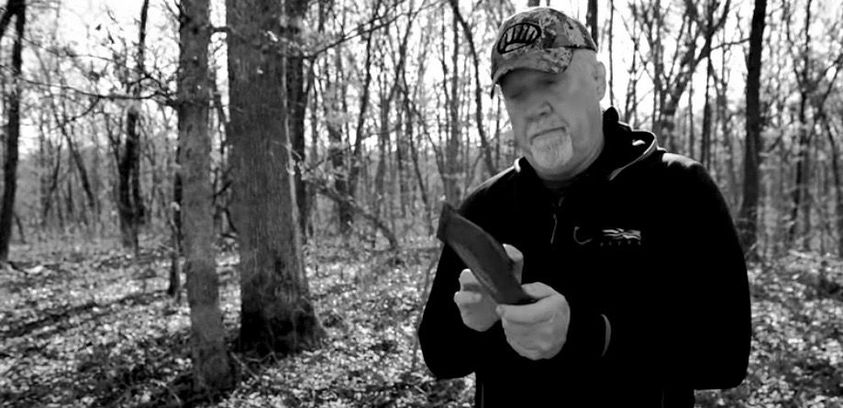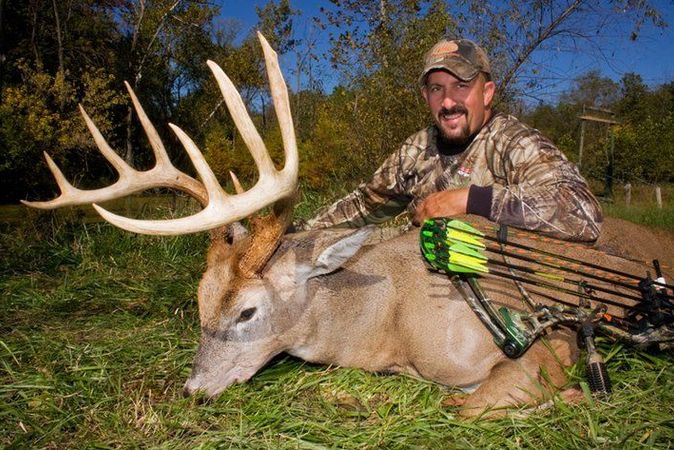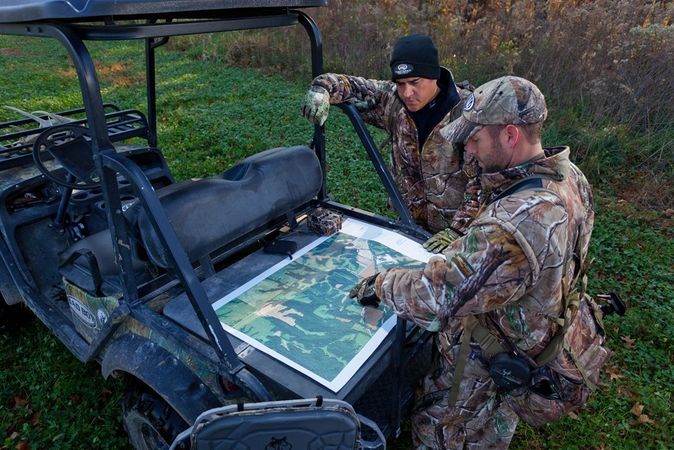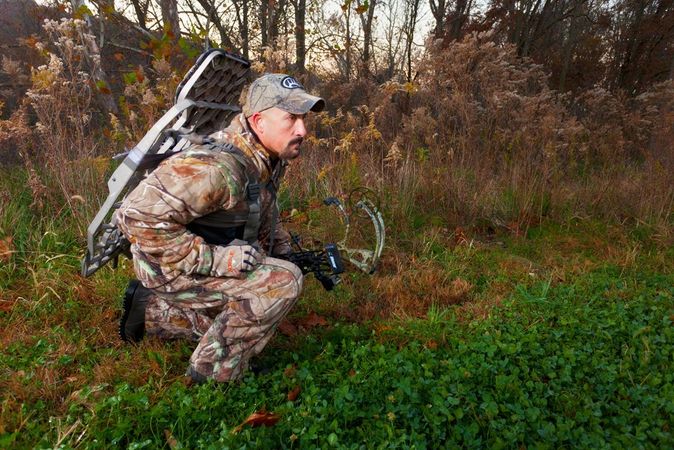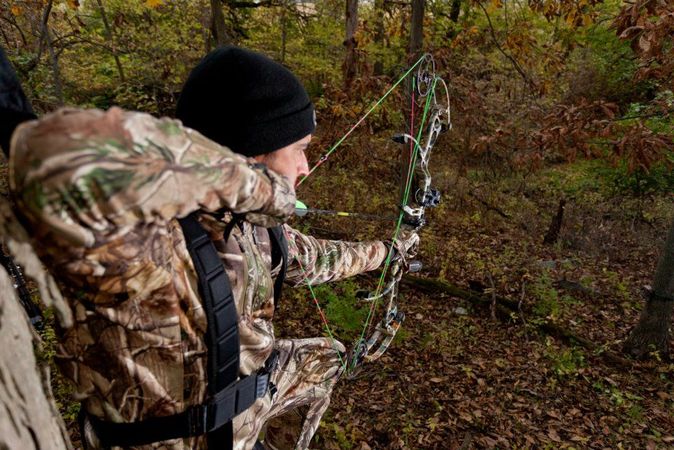Have the turkey woods laid bare some unwelcome truths about your turkey-calling prowess?
Maybe birds haven’t answered your calls because of other factors: erratic wild-turkey behavior, unseasonable weather in your area or hunting seasons that no longer align with peak breeding periods.
But it could be something else: maybe you’re just a little rusty. Or maybe you had some early success as a new turkey hunter many years before and, now, you realize you’ve never really refined your calling skills.
In an effort to get back to fundamentals, we’re talking box calls with Whitetail Properties Land Specialist Jeff Propst, who offers rural real estate expertise to buyers and sellers of farmland and hunting ground in his home state of Missouri.
“I’m a huge fan of using a box call,” said Propst. “They make a sound that, to me, it’s hard to duplicate with a mouth call. It’s a raspy, scratchy sound and it works on the turkeys.”
Propst is an avid turkey hunter who has also competed in his fair share of turkey-calling contests over the years. He’s been turkey hunting for over 40 years and, still, it’s the box call that he favors. And he loves it for its versatility.
“With a box call, you’re basically yelping on it and cutting on it,” says Propst. “So it’s not as good for your lower pitch calls like your real low tree calls. But I think a lot of people look at it as a beginner’s call. I don’t look at it that way,” Propst says. “It’s actually one of my favorite calls.”
The Basic Yelp With a Box Call
When using the basic yelp on a box call, you can change the tone by putting more pressure on the lid. And, obviously, the faster you go, the greater the sense of urgency the yelps relay. Change the rhythm by speeding up or slowing down, but you’ll ultimately want to keep the pace consistent, and don’t let the pressure you’re placing on the lid vary.
When using the basic yelp, you’ll create a series of 3, 4 or 5 yelps to call up gobblers in the spring hunting season.
Hear Propst demonstrates the basic yelp call at minute-marker 1:28 of the accompanying video above.
Box Call Grip
Propst suggests riding your thumb on the top of the lid to control pressure more consistently. In the past, you’d see most turkey hunters gripping the box-call paddle like you might hold the end of a flashlight, cradling it by using all the fingers and the thumb.
Propst prefers to hold the paddle end between the pointer and index fingers of his dominant hand, while resting the thumb of his non-dominate hand on the lid to control pressure.
You can see how Propst grips the box call at minute-marker 1:40.
Missouri Land Specialist Jeff Propst has been turkey hunting for over 40 years and, still, it’s the box call that he favors. Photo: Chris Propst, via HUNTERRA Maps Facebook
The Assembly Call
This call simply requires you to increase the number of yelps in a series.
“If you want to get on it really hard, you’ll just increase the number of yelps,” says Propst. “A lot of people call it an assembly call. It’s common in the fall when hens are calling up their poults. They’ll just yelp and yelp and yelp. But in the spring, it works as a locator.”
Think of the assembly call as a longer, drawn-out series of basic yelps.
You can hear Propst demonstrate the assembly call at minute marker 2:28.
Cutting
In the spring when the woods are active, the hens are hot and the gobblers are calling back, it gets crowded. That’s good and bad. You don’t want to be overlooked. In these charged environments, consider a mix of yelps and cutts.
“A lot of times, I’ve seen hens do this, where it’s a territorial thing,” Propst says. “They’re running other hens off, or they’re excited when they’re going to a gobbler. So you mix those yelps up with some cutts, and it gives a little bit of variety. This approach puts some urgency in a hen’s calls and expresses what she’s trying to accomplish.”
You can hear the mix of yelps and cutts at minute-marker 2:50.
Propst believes a turkey hunter can have more success getting a good cutt on a box call, by changing your hold.
“You’re better to turn the call,” he says. “So if you’re right-handed like me, take the paddle (in between the pointer and index fingers) and make a short, quick, choppy motion with the paddle, so the paddle comes down with quickness and raised pressure.
See Propst demonstrate cutting on a box call at minute-marker 3:36.
You'll often hear hens use assembly calls in the fall, but these calls work well in the spring as a locator call. Photo: LaCrosse Footwear, via Facebook
Fly-Down Cackle
There are times when a hen will cutt without mixing in yelps. You might hear this in the mornings, as a hen flies down from her roost tree. This yelp-less cutting is often referred to as a fly-down cackle. But it’s simply a series of fast cutts.
Hear the rhythm and pressure used to mimic the fly-down cackle at minute-marker 3:58.
You’ll notice that, essentially the motion to make the cutts is the same as when cutts are mixed with yelps, but the rhythm is different. The fly-down cackle starts with quick-motion cutts and then slows, allowing the cackle to trail off.
You don’t hear hens make this call very often in fall hunting seasons. It’s primarily heard in the spring breeding season when hens are high-energy.
BONUS: A Note About Concealing Movement
The classic way to hunt a wild turkey is sitting up against a tree. A lot of turkey hunters feel like they’re down in it, on the dance floor, if you will, rather than standing above on the balcony. Being perched high, as deer hunters often are, offers a broader view. It’s strategic. But you’re not down there dancing with the others, speaking into nature’s conversations. And that’s the thing that tends to hook the turkey hunter.
Of course, the downside is the same as the upside: you’re right there in it. And a turkey’s eyesight is excellent. So to suggest movements should be subtle and limited is putting in mildly.
“If you can’t see the bird, but you know he’s heading in the direction of your setup, I generally put down my box call when I think the gobbler’s within a hundred yards,” Propst says. “And a lot of times, I’ll listen for them to drum.”
Propst always has a mouth call too, and he’ll try to finish the bird using that.
“You have to be very careful when you’re working a box call,” he says. “Watch your hand movement, and understand a lot of that (timely caution) just comes from experience.”
To watch more of our turkey calling tips, check out Turkeys 101 on our LandBeat series.


